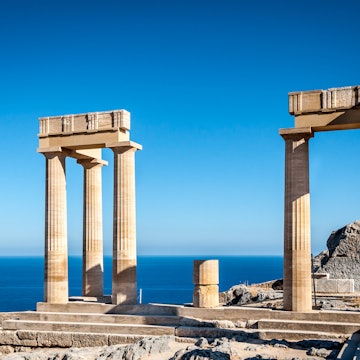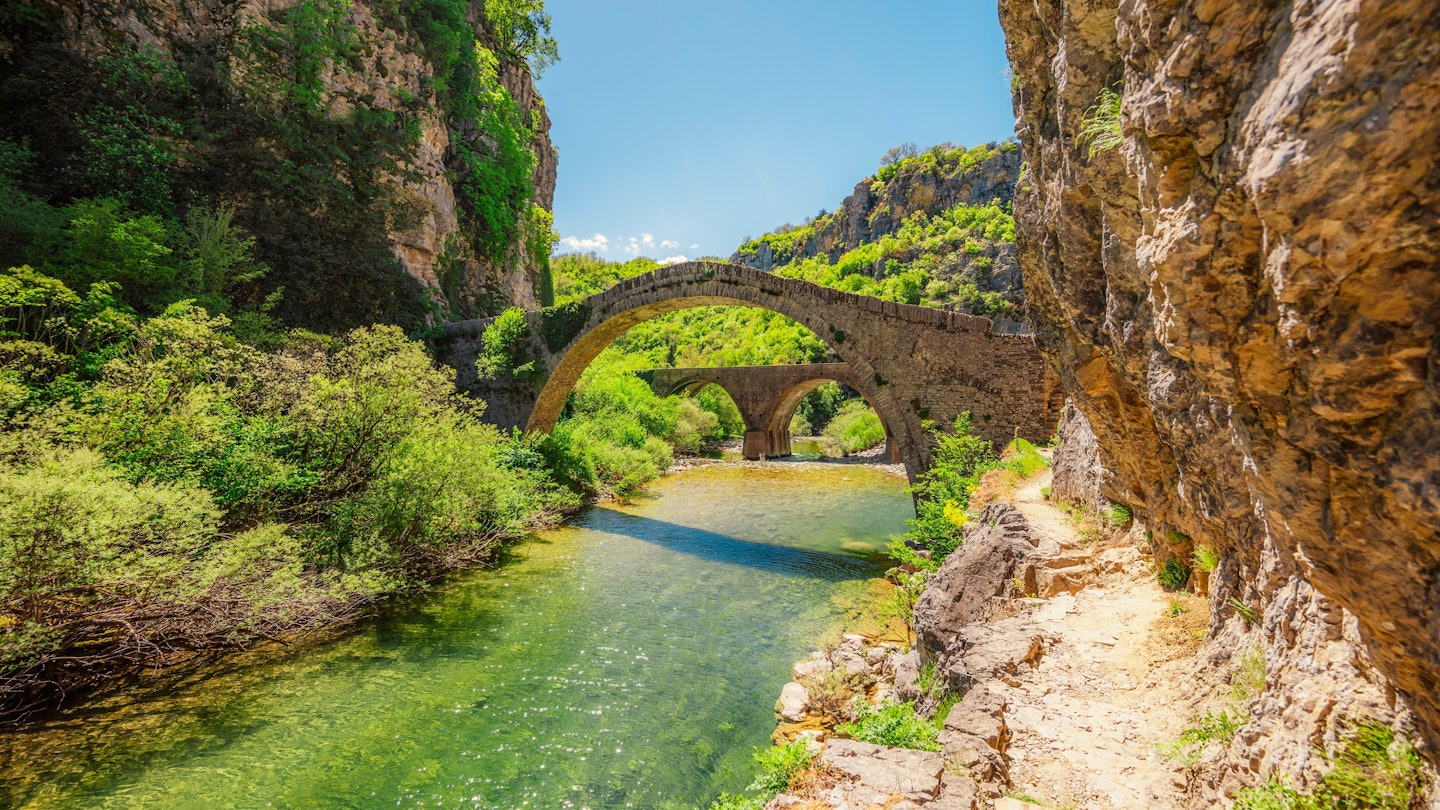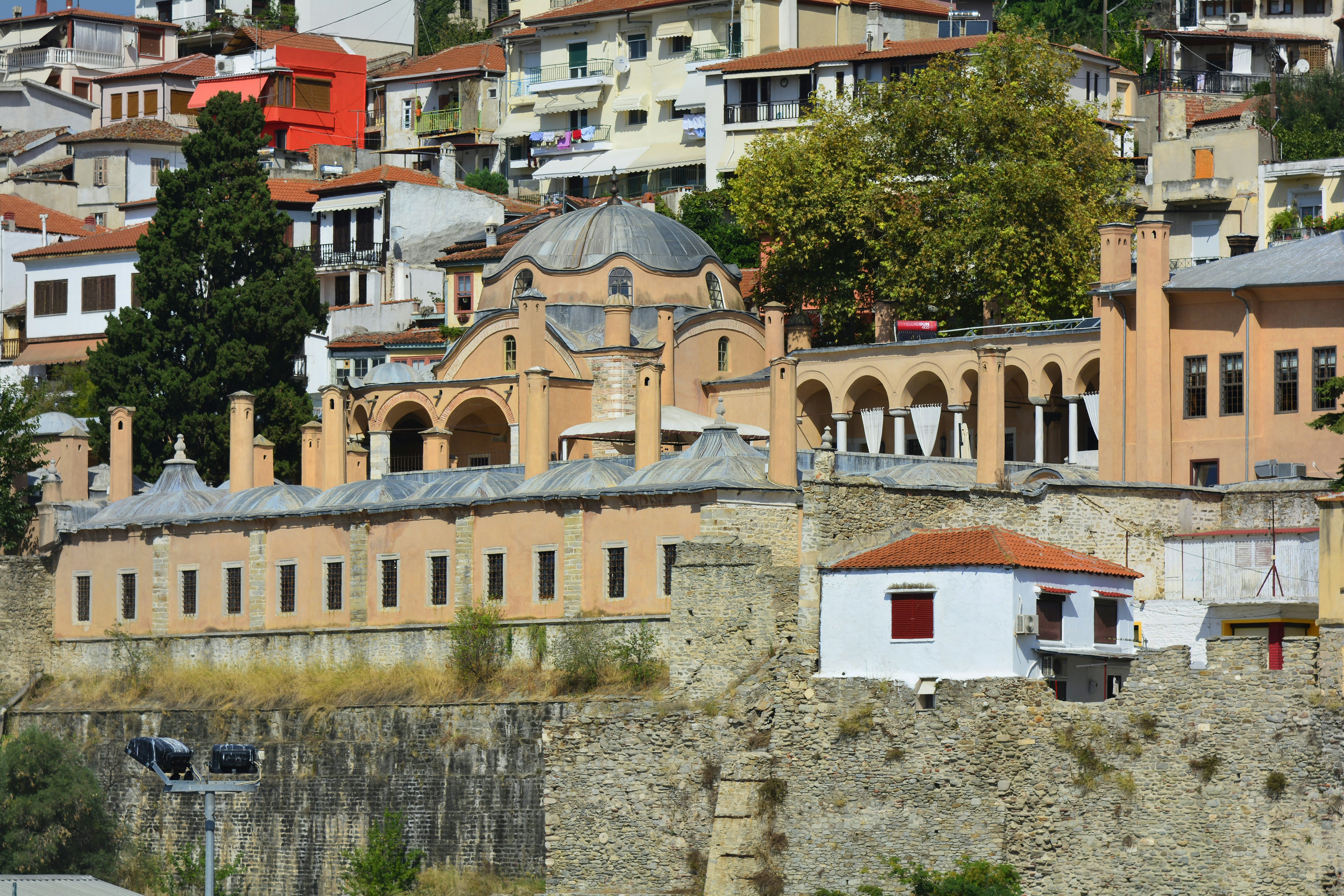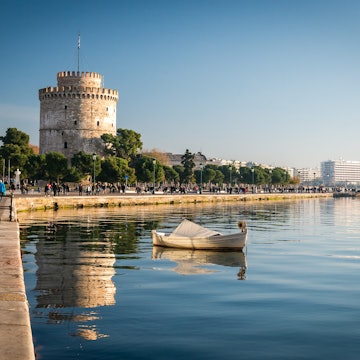

Kokkorou bridge, medieval stone bridge on river of Voidomatis, Pindus Mountains, Zagori, Greece. zedspider / Shutterstock
One of the most fascinating drives across Greece is the 670km journey from the Turkish border crossing of Kipi in Thrace to Igoumenitsa on the Ionian Sea. Known as the ‘Egnatia Odos’, after the ancient Roman Via Egnatia which conveyed tradesmen, armies and regular travellers across part of its length, this modern highway is part of the European E90 highway system stretching from Istanbul to Italy (via a Greek ferry from Igoumenitsa).
Completed in 2009, the road proved devilishly complex to build due to the mountains of the Pindos range in Epiros. Architects had to build some 1650 bridges and 76 tunnels to overcome the numerous topographical challenges. In the end they prevailed and driving times between important points such as Thessaloniki and the Epiros’ provincial capital of Ioannina were halved.
While (not only) Greek drivers get a thrill out of shooting for 200km/hour speeds on the highway’s long, flat expanses, the major reward for travellers lies in the close access the Egnatia Odos provides to many towns of historic and culinary interest, all complemented by an ever-changing scenery quite different from elsewhere in Greece.
When approaching from Turkey, the earthy eastern plains of Thrace are first to emerge, with their vivid patches of sunflowers, rolling fields of wheat and storks’ nests dotting the telephone poles. The first major settlement, Alexandroupoli, is a pretty port town with good seafood restaurants, and just west of the Evros Delta, an important migratory route perfect for bird-watchers. Alexandroupoli is also the jumping-off point for ferries to Samothraki island.

Some 65km further west of Alexandroupoli is Komotini and, another 56km further, Xanthi. These two slightly dusty inland towns are notable for their Turkish-speaking minorities, holdovers from the Ottoman Empire, who still purvey succulent sweets such as lokum and baklava. Tobacco and other agricultural pursuits are popular here; visit the restored home-museum of the Kougioumtzoglu family, bygone tobacco barons, flanked by other old-town traditional homes. For its part, Komotini offers an intriguing archaeological museum and Byzantine and Ottoman structures. For travellers seeking outdoors adventures, the rolling Rhodopi mountain range, excellent for a leisurely hike, is less than an hour’s drive north of these towns running along the Bulgarian border.
About 110km further west of Komotini, the Egnatia Odos reaches Kavala, the first town in Greece’s Macedonian province. This port features a pretty, elevated old town where a restored Ottoman structure now houses possibly the swankiest luxury hotel in northern Greece, the Imaret. Kavala is also the port from which ferries leave for the popular, pine-scented island of Thasos.
Continuing west for 170km, the highway passes near Thessaloniki – Greece’s second city, and a mandatory stop with its plethora of museums, Byzantine churches and a lovely old town. The city’s exuberant student population keeps things lively, with excellent nightlife and cafes, plus an array of appealing hotels and restaurants.
Some 71km after Thessaloniki, the Egnatia Odos passes Veria, a small town with several worthwhile Byzantine shrines and nearby archeological sites such as the ancient Macedonian Pella and Vergina. The first destination warranting an overnight stay, Metsovo (70km from Veria) is a mountain hamlet just over the provincial line in Epiros. As elsewhere in this region, the inhabitants here derive from the Aromanian-speaking Vlach minority, well known for their masonry. Their smart stone houses (many now turned into B&Bs) line the steep descent into Metsovo.
Further into Epiros, the architectural wonders of the Egnatia Odos start to come to life, with tunnels disappearing for miles into solid rock and the inevitable danger signs flashing over the roads zigzagging the cliff-tops. Crossing the mountains affords stunning views, taking you to Ioannina (35km from Metsovo), another student city with some delectable restaurants and good beer and wine bars. The placid old town, enclosed by a massive Ottoman wall, conceals several appealing guesthouses, and culminates on a bluff above with an Ottoman citadel and fascinating Byzantine museum.
For travellers seeking a local excursion, a 30-minute drive northward on paved roads leads to the Zagorohoria, a region of developed traditional mountain villages overlooking the awe-inspiring Vikos Gorge, said to be the world’s deepest.
Make it happen
EU citizens can drive freely in Greece with their home licences. Citizens of other countries should have an international driver’s licence.
Note that the completion of the Egnatia Odos, and diversion of most traffic to it, has meant that many now secondary mountain roads are less used and not well maintained – avoid them especially during night or poor weather conditions. Even on the highway itself, rest areas are relatively infrequent and venturing into the nearest town for petrol or snacks is not a bad idea.
This article was first published in September 2010 and last updated in April 2015.















